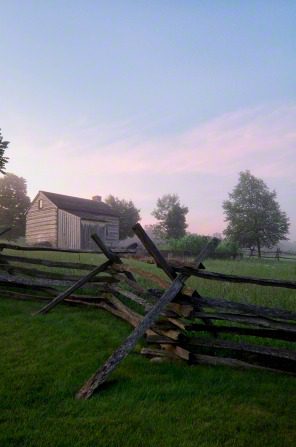
(Image from LDS Media Library)
I was reminded a few minutes ago of the review of D. Michael Quinn’s Early Mormonism and the Magic Worldview that my friend, former missionary companion, and BYU department colleague Dr. Stephen D. Ricks and I published in Sunstone all the way back in January 1988. Thinking that some might find it helpful (or, at least, of antiquarian or even paleontological interest), I share it again here:
MICHAEL QUINN’S Early Mormonism and the Magic World View, like his other studies, is well written and articulate, and, except for the unfortunate incorporation of his references into the body of the text, proceeds with a smooth and deliberate flow. Like his other writings, this volume reflects deep erudition. Fully sixty- seven pages are devoted to listing bibliography, their usefulness enhanced by an introductory section giving those entries treating specific topics, e.g., “theories of magic,” “the relation between magic, religion, and rationality in early modern Europe,” “the interrelation of the occult and Mormonism,” and “Mormon folklore.” In addition, there are forty two pages of figures.
Quinn has provided a wealth of information concerning the early history of Joseph Smith, his family, and the early period of Mormon history, frequently from almost inaccessible sources. He offers considerable evidence indicating that Joseph Smith, members of his family, and some of his early associates were involved in the use of seer stones, divining rods, amulets, and parchments, as well as in the search for buried treasure. Further, he adduces evidence to indicate that Joseph maintained some interest in these matters even after the New York period. Quinn believes that involvement in such things in no way compromises Joseph Smith’s role as a prophet and, indeed, bears his testimony early in the book.
Up to this point, we see no need to contest Quinn’s basic evidence or to disagree with what we understand to be his thesis. On the other hand, we have considerable reservations about his uncareful and potentially misleading use of the terms “magic” and “occult,” as wall as the extent to which he might seem to be implying that these activities had a formative influence on the coming forth and current composition of the Book of Mormon.
Quinn says in his introduction (pp. xi-xii) that he has adopted Webster’s Third New International Dictionary as a guide for his use of the terms “magic” and “occult.” He also describes a “magic world view” which he believes characterized the Smith family and many of their associates. However, even a casual reflection on some aspects of the most normative of Western religious traditions, such as Judaism and Christianity in its major forms, reveals rites that could easily be construed to fit Webster’s definition of “magic,” and beliefs that correspond to Quinn’s further refinements on the “magic world view.” With some ingenuity, it could be argued that the more radical fundamentalist Protestant formulations of confessing Christ as one’s personal savior — with their concomitant guarantee of salvation — represent a kind of “magic.” The Roman Catholic doctrine of transubstantiation could also be (and has been) viewed in the same way.
Quinn is not unaware of the problems inherent in his definition. In his introduction and in the first chapter of the book, he discusses the difficulty of establishing an objective set of criteria to distinguish “magic” from religion. Yet, throughout the book, he persists in describing certain activities of Joseph Smith as “magical.”
Quinn’s calculus for distinguishing “magical” actions from those that are not is certainly not the same as that of Joseph Smith, who provides no explicit evidence that he viewed the use of seerstones and divining rods, the possession of amulets and parchments, or digging for money as “magical.” The assumptions of Quinn’s definition are, to a large extent, the assumptions of normative Protestant Christianity, influenced by Enlightenment rationalism. But are these the optimal presuppositions to use in a work of this type? We think not. Protestants influenced by the Enlightenment were precisely those who opposed Joseph Smith most vehemently. Why, in a volume that wishes to be objective about, if not sympathetic to, Joseph Smith and early Mormonism, does Quinn purchase the assumptions of Joseph Smith’s hostile critics?
There is a growing consensus in the social sciences that, since there are no objective criteria for distinguishing magic from ritual, “magic” is useless as a classificatory term. In some ways, we are inclined to think it worse than useless. It is so frequently pejorative in connotation, and its polemical potential is so high, that it tends to draw its users away from the standards of objectivity that the social sciences claim to espouse. (The same observation applies to the term “occult,” as well.) Borrowing the “center/ periphery” (i.e., “outsider/insider”) model from the sociologist Edward Shils, “magic” might perhaps best be defined as ritual action of the periphery as it is viewed by those at the center. Such a definition would clearly imply that it is the perspective of the speaker or writer, and not the nature of the act itself, that determines whether that act is viewed as magical. It seems to us that other, less value-laden terms, such as “religion,” “popular religion,” and even “folk religion,” might be used with more profit, objectivity, and, ultimately, less misunder- standing. We suspect that the rather sinister and, for many believing Saints, uncomfortable overtones to the discussion of Joseph Smith’s relationship with “magic” and the “occult” would be substantially reduced or altogether eliminated if one of these other, less titillating terms were substituted, or if those actions broadly categorized as “magical” were described more specifically. To say that Joseph Smith had a seer stone, and sometimes used it to look for treasures hidden in the earth, is one thing; to say that he was involved in “magic” and in “the occult” (though actually describing the same activity) sounds far more serious.
To be concluded.












